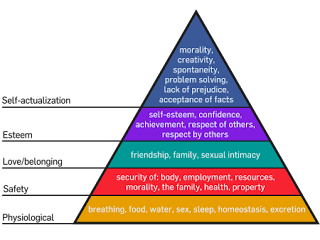What a word! Just
give Google the opportunity to identify change and it will reveal 348 million
hits. What a popular word! It is
everywhere from the classroom to the boardroom. It represents a degree of
impermanence with the current state. I have wrestled with ‘change’ as it
applies to the business world for quite some time. As the entire world continues to form and
transform one would have to ‘change’ just to stay the same.
“If you want things to
stay as they are, things will have to change” – Giuseppe Tomasi di
Lampedusa in Il Gattapardo
Organizational transformation is probably the most
publicized use of ‘change’.
Organizations undergo a series of formation and transformation for a
multitude of reasons ranging from increasing market dominance to simple
continuance. In her recent article Implementing Change, Merge
Gupta-Sunderji unpacks the different elements of organizational change of
culture. All of the elements of change
are in reference to how they impact employees.
Primary change is probably the easiest corporate change to
implement and it has no impact on employees.
This type of change doesn’t have any impact on employees’ day-to-day
activities. Secondary change begins to
encroach on employee behavior. However,
it is still in direct alignment with their current activities. Secondary change would take the form of
increasing customer service in a service oriented organization.
Finally tertiary change the ‘change’ with the greatest
depth. With tertiary change the core culture of the organization must under go
a complete transformation from the ‘old methods’ to an adoption of the ‘new
methods’. Tertiary change comes down
from the leader; the vision must be ‘sold’ to every member of the
organization. Each employee must see the
value of the new methods, embrace the vision but more importantly must ‘buy-in’
on a very personal level.
Merge walks the reader through the steps of orchestrating
organization cultural change, from the leader’s presentation of the vision, the
leader’s fielding of questions, empowerment through training and then
ultimately through reward and recognition.
Merge concludes that cultural transformational change is gradual and
leaders must be patient.
It has been my experience that underlying all cultural
transformation there are deep underlying elements that require acknowledgement. Any leader seeking organizational
transformation must have the respect of the organization. This goes beyond ‘lip service’, the team must
believe that the leader is credible, knowledgeable and acting in the best
interest of the organization. Without
this fundamental element of belief in the leader all transformation change is
just a pipe dream.
The second most critical element to begin paving the way for
transformation requires each person being able to see how they benefit from the
change. Without precipitating a
tangential discussion, humans are basically greedy. Therefore any type of change that is to occur
in the organization, employees must understand how the transformation will
affect them; people need to see how it brings them benefit. Reaching to Abraham
Maslow’s Hierarchy of Needs, people must satisfy lower level needs before
moving up the hierarchy.
As basic needs are satisfied, higher level needs become
exposed and then addressed. By way of an
example, if a corporate transformation fully addresses one’s psychological needs
this change will pave the way for the person to seek fulfillment of their
self-actualization needs. If the employee cannot see how their needs are met or
importantly how the transformational change will meet more of their needs, the
entire process of transformation will be derailed. It is because of this hierarchy of human
needs that any transformation that focuses on attrition will not be received
well or orchestrated well, other than at the executive level.
Good leaders know the power of the carrot and the stick in
achieving goals. Through Maslow’s model,
leaders are able to demonstrate how more of ones’ needs can be met as a
precipitate of adopting the new methods and embracing organizational
change. At the same time the stick is
the combatant for those not embracing the transformation. However, those seeking to preserve their
position in the hierarchy often undertake silent conformity to transformation;
they go through the motions of transformation but not committed to the outcome.
Along with those who are in silent conformity, often in the
midst of corporate transformation there are those who believe they have some
‘special knowledge’ that renders the leader’s vision futile. They don’t embrace the actualization of
themselves to a greater potential.
Instead these individuals, operating on their own self-centered
motivation are the cancer that permeates the organization, to undermine the
transformation. Slowly they infect the
minds of the team to undermine the vision of leaders. Sadly, these sly individuals go through the
motions of compliance, like those silent conformists, but are actively undermining
the transformation.
For true cultural transformation to succeed the leader must
know their troops and build rapport of mutual trust. At the same time the leader must be able to
identify those who are silent conformists as they are only parasites on the
organization. More importantly identify those who are cloaked as silent
conformists but are creating the political undertow in efforts to derail
corporate transformation. There are many forces acting against transformation
and the savvy leader must always be aware of the playing field.

